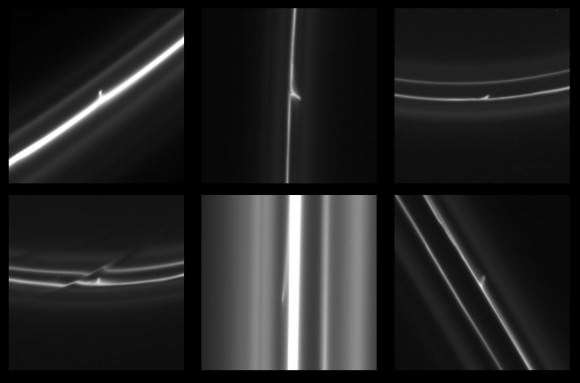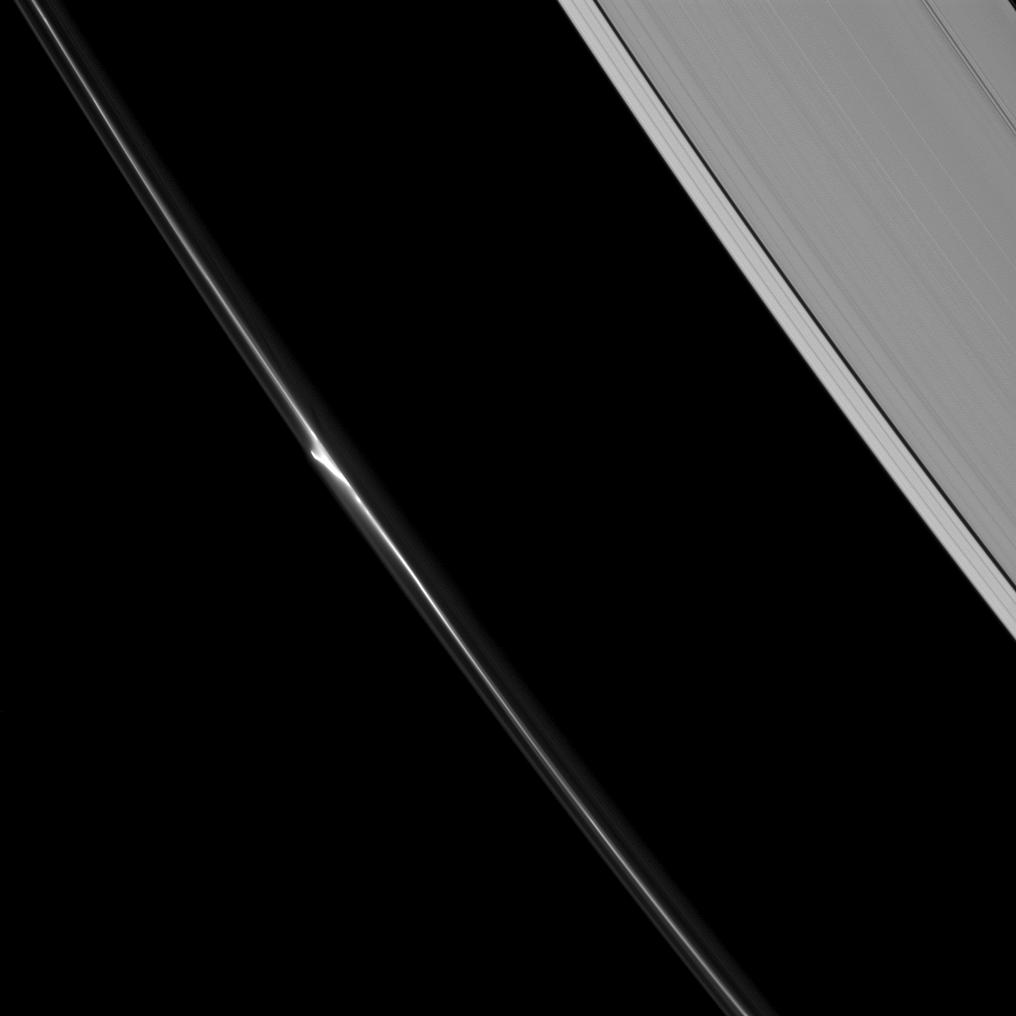We all know that Saturn’s moon Enceladus has a whole arsenal of geysers jetting a constant spray of ice out into orbit (and if you didn’t know, learn about it here) but Enceladus isn’t the only place in the Saturnian system where jets can be found — there are some miniature versions hiding out in the thin F ring as well!

The image above, captured by the Cassini spacecraft on June 20, 2013, shows a segment of the thin, ropy F ring that encircles Saturn just beyond the A ring (visible at upper right). The bright barb near the center is what scientists call a mini jet, thought to be caused by small objects getting dragged through the ring material as a result of repeated passings by the shepherd moon Prometheus.
Coincidentally, it’s gravitational perturbations by Prometheus that help form the objects — half-mile-wide snowball-like clusters of icy ring particles — in the first place.
Unlike the dramatic jets on Enceladus, which are powered by tidal stresses that flex the moon’s crust, these mini jets are much more subtle and occur at the casual rate of 4 mph (2 meters/second)… about the speed of a brisk walk.
The reflective jets themselves can be anywhere from 25 to 112 miles (40 to 180 kilometers) long.
See more images of mini jets — also called “classic trails” — below:

Over 500 of these features have been imaged by Cassini since 2005. Read more about mini jets here.
(And don’t worry, Enceladus… these little jets are interesting but they have nothing on you!)
Source: Cassini Imaging Central Laboratory for OPerationS (CICLOPS)
Image credits: NASA/JPL-Caltech/SSI/QMUL.

